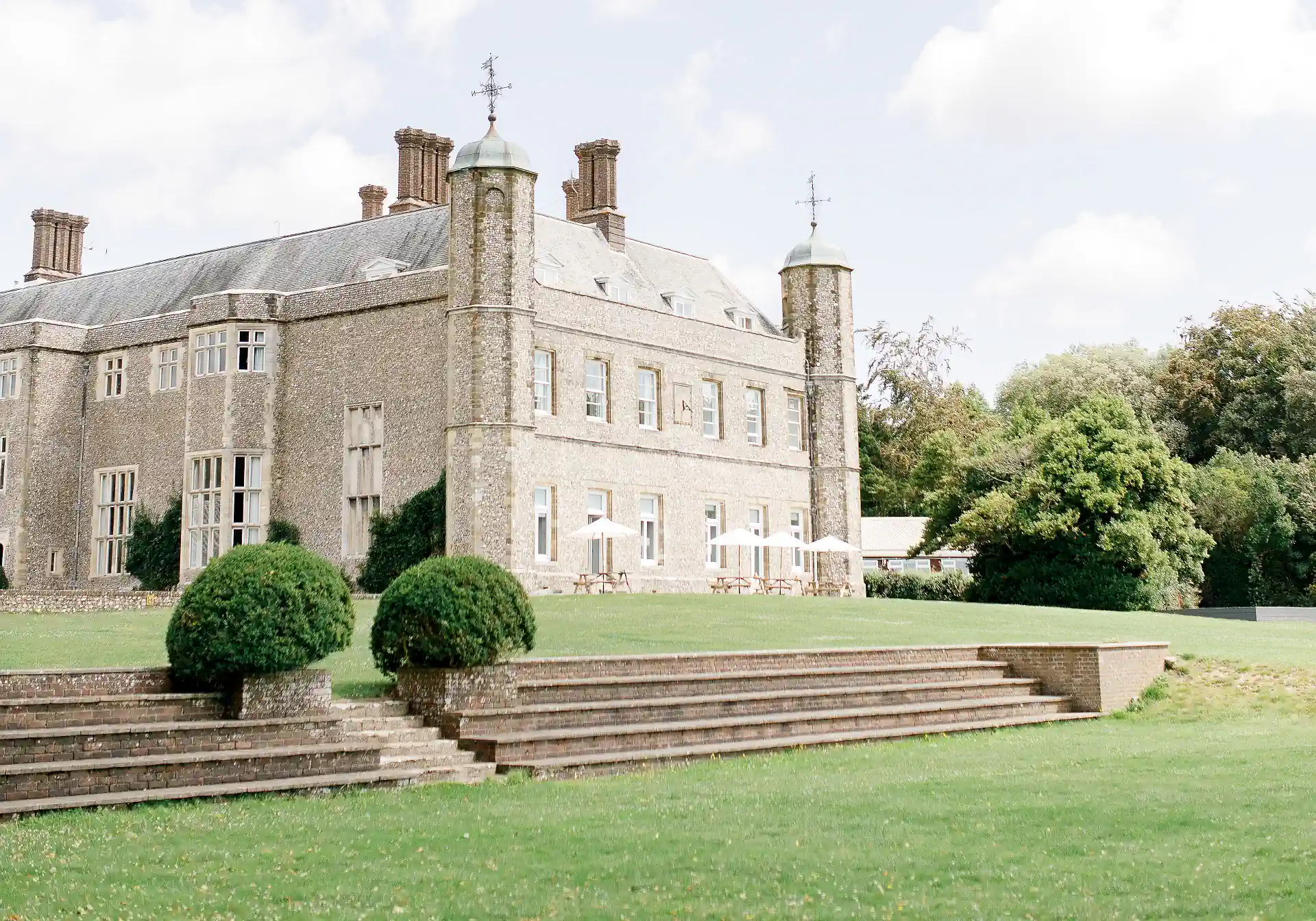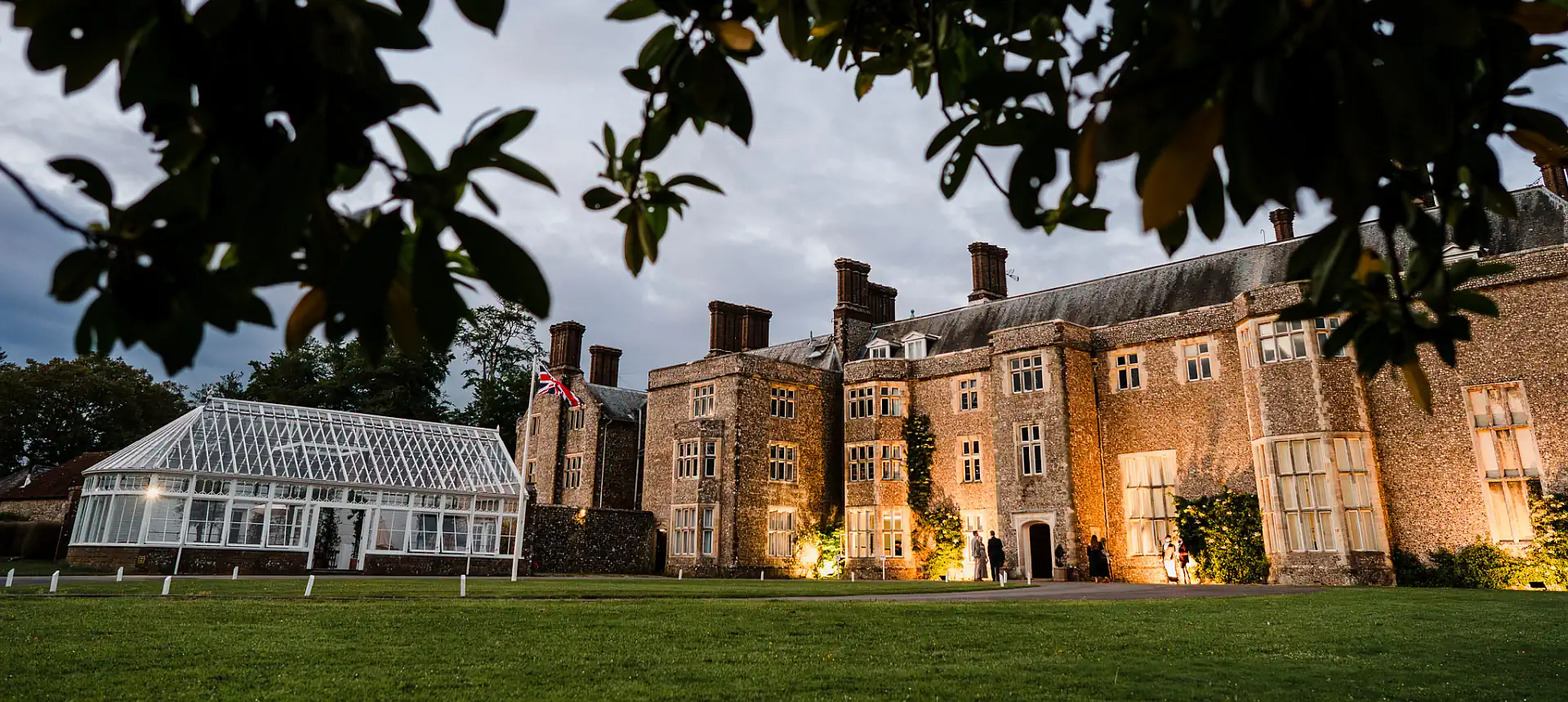The House
Slindon house is a striking, Georgian style Manor House set in beautiful South Downs National Park countryside. With breath-taking views set in the tranquil village of Slindon.
The house, with uninterrupted views across the South Down’s to the sea, adorns a majestic ambiance as it presents itself across its 14-acre grounds – it provides the idyllic atmosphere for weddings, parties and events of all kinds.
Inside Slindon House you are met with an impressive Entrance Hall and Winding Oak Staircase. The Grand Hall imposes its decorative ceilings and its magnificent fire place encapsulating its heritage. The Grand Hall is then met with two adjoining spacious rooms, one of which our blue room offering abundance of light and a feeling of calmness.
Slindon House grounds are extensive, with a beautiful conservatory hosting large olive trees. To our ornamental garden, secret paths meandering through woodland and a perfectly manicured sunken lawn the south down views. The expansive land also comprises a walled garden.






The History of Slindon House
Slindon House grounds were originally the medieval Summer Palace of the Archbishop of Canterbury, Stephen Langton (c1150–1228) he attended the signing of the Magna Carta in 1215.
The current version of Slindon House we see today was constructed in the time of Queen Elizabeth I by the Kempe family, for over 300 years the house was resident to sheltering Catholics, during this time the Kemp family were given the title of Earl of Newburgh. In 1814 the Countess of Newburgh appointed herself guardian and benefactress of Slindon Village, she requested the construction of The Folly on Nore Hill.
The Folly was built around 1814 to provide work for villagers during the depression following the Napoleonic Wars and can be seen today from the upper floor windows of Slindon House It resembles a gateway that mysteriously leads nowhere.
In 1861, following the death of the Countess, Slindon House passed to the Leslie Family, who were also Catholics. They funded the building of the church opposite the house in 1865, namely St Richards Church, after the 13th century Bishop of Chichester. In 1902 the Leslie family mysteriously disappeared.
In 1913, Slindon House and Estate was purchased by Mr F. Wootton-Isaacson, a wealthy London entrepreneur and a dressmaker for Queen Victoria. He purchased the house for his sister Violet, Lady Beaumont and made several alterations to the property to make it more Georgian in its appearance. When Lady Beaumont died, she bequeathed Slindon House, along with the surrounding parkland and beech woods, to the National Trust.
During the World Wars the house was used as a hospital, as was common with large estates during this time. Several remnants of World War II can be found in the basement today, scrawled writing and dates by former soldiers feature on the walls.
In 1956 Lindfield School was moved to Slindon House, it was renamed Slindon College in 1972 and is an independent day and boarding school for boys aged 8-18.
